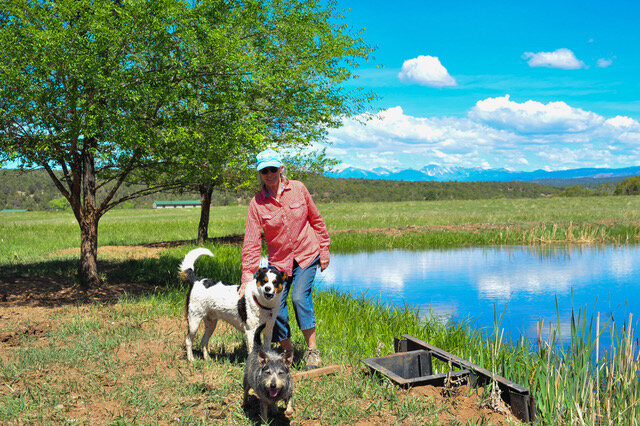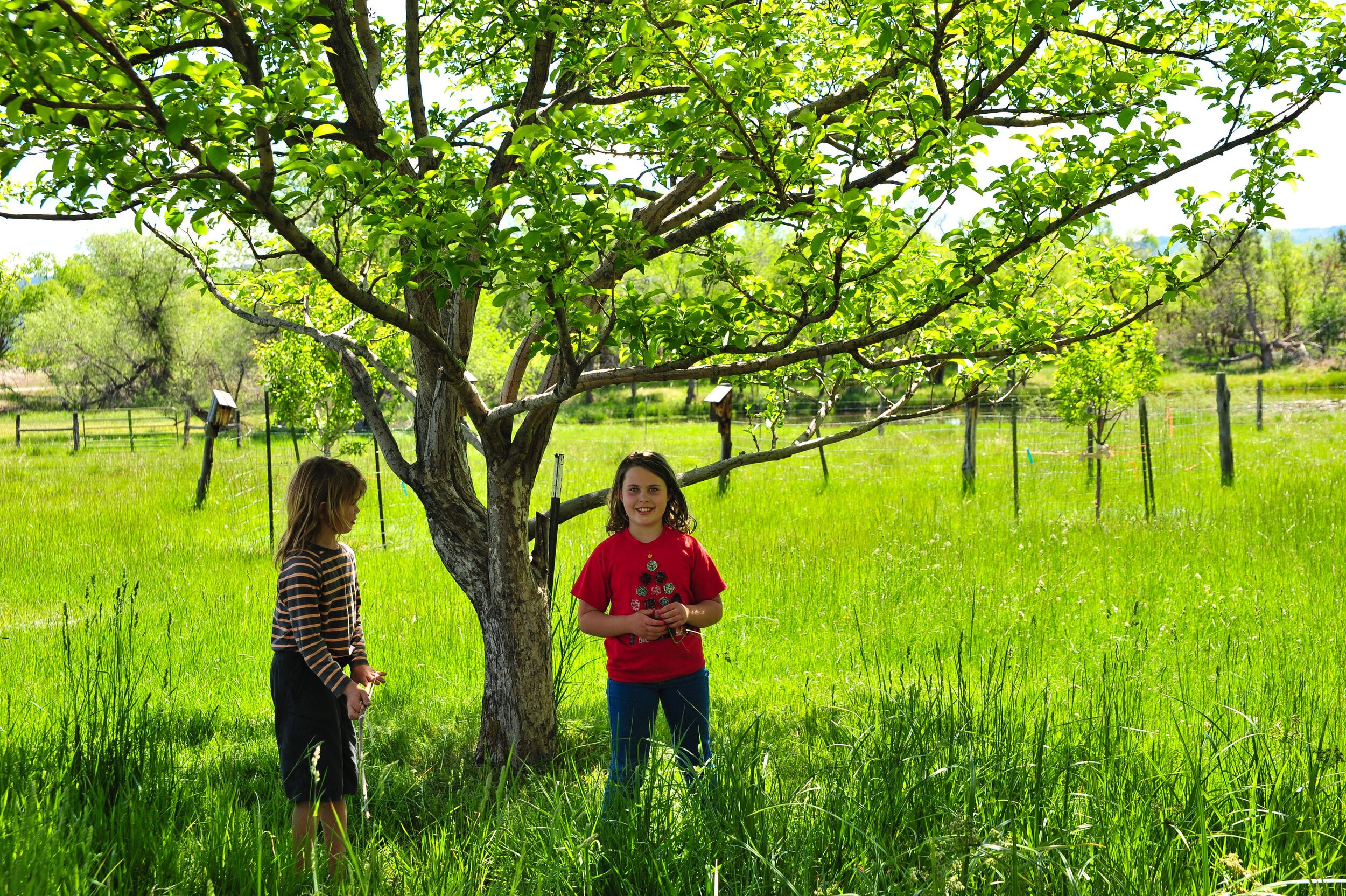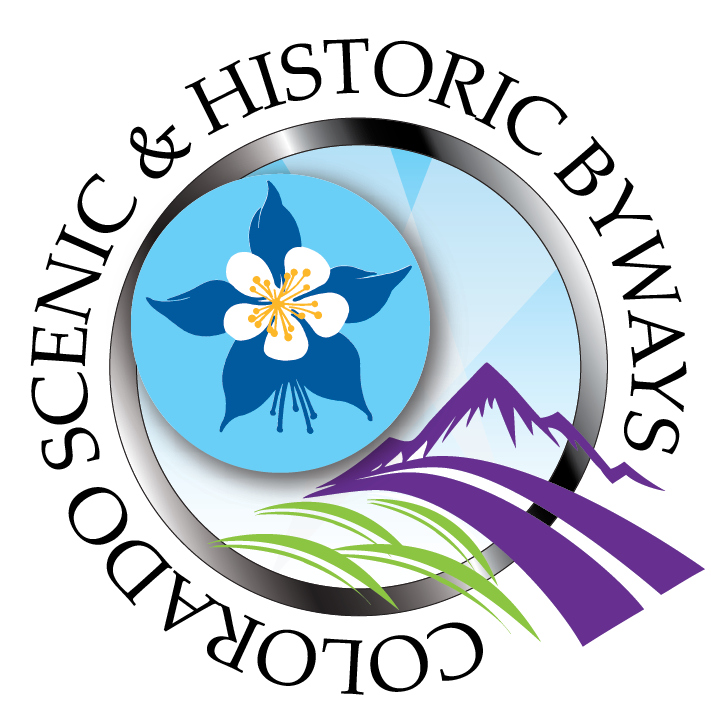By Åsa Björklund, La Plata Open Space Conservancy
The signs along the county road make it clear: no weed spraying is allowed near the property. This is a slice of pollinator paradise. Wedged between expansive farm fields near Bayfield, Marikay Shellman’s 40-acre property is a lush haven of willow and fruit trees where a variety of birds, insects, and plants enjoy the leafy protection.
While Marikay shows me around the property, her visiting grandchildren chase each other, laughing and screaming in chorus as if on the best summer camp ever—which they may very well be.
Who are the pollinators?
Although birds, bats, and other creatures are also pollinators, insects are the animals that do the bulk of the pollination that affects our daily lives. Some of these insect pollinators will be familiar (bees and butterflies), but you might be surprised by some of the others (flies, wasps, and beetles). Endangered pollinators include butterflies, bumble bees and many other wild bees. For instance, the iconic Monarch butterfly population has declined by 80% to 99% in Mexico and California.
Why care?
Pollinators are essential to the reproduction of over 85% of the world’s flowering plants, including more than two-thirds of the world’s crop species. The United States alone grows more than 100 crops that either need or benefit from pollinators, and the economic value of these native pollinators is estimated at $3 billion per year in the U.S. Beyond agriculture, pollinators are keystone species in most terrestrial ecosystems. Fruits and seeds derived from insect pollination are a major part of the diet of approximately 25% of all birds, and of mammals ranging from red-backed voles to grizzly bears.
Unfortunately, in many places, the essential service of pollination is at risk from habitat loss, pesticide use, and introduced diseases.
(Source: Xerces Society for Invertebrate Conservation: www.xerces.org)
Since purchasing the land 44 years ago, Marikay has worked to improve her corner of Southwest Colorado. A system of levees turn her pre-existing irrigation ditch into ponds buzzing with life-- birds, insects, and even Northern Leopard Frogs (listed as a Species of Greatest Conservation Need by Colorado Parks & Wildlife). The results are visible. Marikay points at a large bird nest perched high up in the tree crowns.
“It’s the second year in a row that the Prairie Falcon nested here,” she explains.
Herons fish the pond behind her house and host of other bird species flutter in the tree branches. But her priority is set on conserving a specific set of airborne beings: pollinators. Although birds, bats, and other creatures are also considered pollinators, insects do the bulk of the pollination that directly affects human life.
“When most people think of pollinators they think of the honeybee, but the honeybee is of minor importance,” said Marikay, pointing at a small bee crowning a dandelion flower. Honeybees, in fact, are not native to North America, and have become ubiquitous only since colonists brought them for honey production. “Native bees are so much more important to pollinating than the honeybee. That’s why you want to leave the dandelions because native bees feed on them.”
Many bees and butterflies are endangered, such as bumble bees and several butterfly species. Pesticide use is a major culprit as is habitat loss. The iconic Monarch butterfly population, for instance, has declined by 80% to 99% in Mexico and California. Lesser known but equally important key pollinators are flies, moths, wasps and beetles.
But why should we care about these critters that sting or annoy us? Because we desperately need them for food production. Pollinators are essential to the reproduction of over 85% of the world’s flowering plants, including more than two-thirds of the world’s crop species. The United States alone grows more than 100 crops that either need or benefit from pollinators, and the economic value of these native pollinators is estimated at $3 billion per year in the U.S, according to Xerces Society.
“I’m trying to do my part for the planet. I’m passionate about pollinators so that’s what I focus on,” Marikay said.
As a retired teacher, learning new conservation methods comes naturally to Marikay, who never hesitates to consult with and invite biologists and other experts to her property to complete field studies to improve her land as a habitat.
“My overall attitude has always been that I don’t own the land—I am a steward of the land,” said Marikay. This feeling is the reason she decided to place her land under a conservation easement with La Plata Open Space Conservancy a few years ago. “I just fell in love with this place, so I wanted it preserved, not developed, not have houses all over it,” she added.
Armed with knowledge and connections with equally passionate naturalists, Marikay is set on continuing the path of caring for the land with the ultimate goal of one day creating a special preserve for species that are on the brink of extinction.
Learn more about pollinators here.
Photo credit: Asa Bjorklund
Photos:
Marikay Shellman in front of one of the ponds that irrigate the property and feed wildlife.
Marikay Shellman.
Marikay's grandchildren love to visit from the city. Here there's lots of roam to play!













